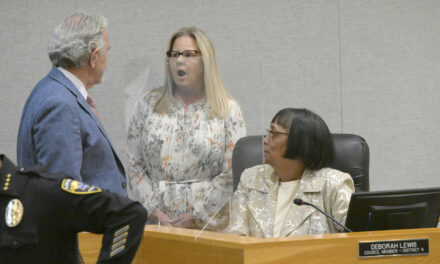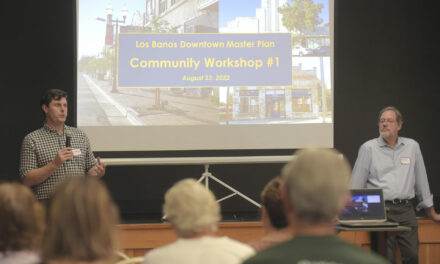The Los Banos Planning Commission recommended new traffic standards to the city council at its May 8 meeting. Staff assessing traffic on a case-by-case basis currently have no adopted guidelines.
“Right now, we’re pretty much winging it,” said Community and Economic Development Director Stacy Elms. Elms added that having no guidelines can “put the city in a position where it needs to defend itself” from legal battles and challenges to its standards.
The new traffic guidelines were created as part of the upcoming traffic master plan that city staff members and the Fehr & Peers company are developing. According to Elms, the guidelines are the first task in the plan.
The new standards will require mitigation if residential developments create 85 percent or more of the city’s average vehicle miles traveled (VMT), industrial or office developments create 85 percent or more of the county’s average VMT, and retail projects that produce any VMT.
Ian Barnes, the principal engineer of Fehr & Peers, clarified that retail projects can be VMT negative by bringing down travel distance. Barnes’ example was a grocery store in a “food desert,” making a neighborhood trip to get groceries shorter than traveling across town just for necessities.
In an email responding to The Express, Elms elaborated that mitigation measures include road diets, bike paths, trails, and “any mitigation that reduces [VMT].” The guidelines account for travel by car, foot, bike and transit.
Commissioners and staff had concerns. Public Works Director Charles “Chuck” Bergson did not feel that county-wide VMT was a good measure for Los Banos due to a large commuter population that the county’s more populated East Side does not share.
“In some cases, that is not favorable,” said Bergson. Barnes clarified that VMT is a metric state law requires. VMT must be measured at the Metropolitan Planning Organization (MPO) level.
The MPO for Los Banos is the Merced County Association of Governments, so VMT must be measured county-wide with some flexibility for residential. According to Barnes, the guidelines use that flexibility to the best of their ability according to state law.
Chair John Cates was concerned about the influence on economic development. There are concerns about the effects, but Elms believes mitigation is feasible. “Development will still be able to occur,” said Elms. Barnes added that having adopted guidelines gives developers certainty of which standards they will be held to.
According to Barnes’ responses to commissioners, commuters would be accounted for by the residential projects using the city VMT average. Projects that affect already bad intersections will only need to pay their fair share.
If a project adds 10 percent more traffic, it can only pay 10 percent of the cost to improve the intersection. Unique cases like amphitheaters would not need to follow the guidelines exactly, with the city able to apply the “spirit” of the law with some flexibility to such projects.
The decision to recommend the guidelines for approval by the city council was unanimous. In their reports, Director Elms, Commissioners Rob Robinson and Kathy Uhley, and Chair Cates thanked Ian Barnes for his comprehensive report. In his report, Cates believes the meeting would be like going through “stats class” and that Barnes made it “a lot more understandable.”
In her report, Elms looked forward to a completed traffic master plan “that will set us…at a very good place for future development.” Elms also highlighted that in addition to being responsible for the city’s payroll and the planning commission’s secretary, Justin Raguntun will now be the interim assistant planner.
“[It’s] great having you,” said Commissioner Robinson to Raguntun. Commissioners Robinson, Elias Reyes, Kathy Uhley, and Chair Cates congratulated Raguntun. All the commissioners thanked the staff members for their work. The meeting was adjourned at 6:51 p.m.



